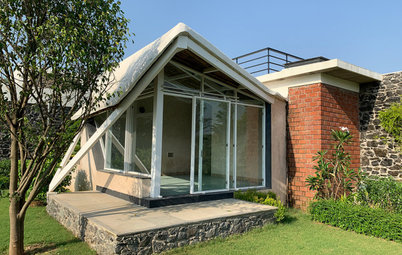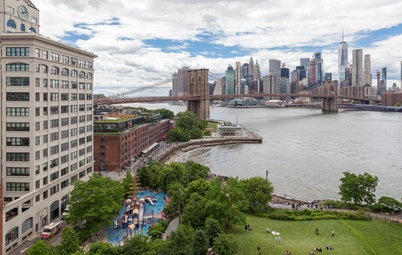What Contemporary Facades Do
Never judge a book by its cover they say? While that may work for books, buildings are a different matter altogether
How a building is designed from the outside says a lot about the spaces it holds inside. A facade expresses multiple ideas about a building’s design. It describes the style of the structure, its use of materials and their execution narrates the time period the structure was built in. A facade becomes the mask or the interactive screen through which an inhabitant approaches the outside world.
Light and shadow play an important role in screen facades that are now quite common in contemporary homes. Screens create a variation of light throughout the day and at the same time provide much needed insulation and sun protection. They adapt well to a range of designs and are used in unique combinations with other materials.
Sun breakers are often used in modern architecture – placed at certain angles, they block harsh sun exposure. These were extensively employed by Le Corbusier and Louis Kahn in their buildings.
Sun breakers are often used in modern architecture – placed at certain angles, they block harsh sun exposure. These were extensively employed by Le Corbusier and Louis Kahn in their buildings.
These days, light wooden louvres or fabrics are also used to create interesting facades. They are used in a combination with sturdy materials like concrete or steel.
Grand commercial projects, low-rise structures and bungalows offer the opportunity to designers to experiment with angular facades. These stretch the interiors in unique ways and create extraordinary forms and spaces.
Newer materials are being explored, which can lend a rustic yet a poetic materiality to structures. One such material is weathering steel. It eliminates the need for painting, and reaches a stable yet rusted stage once exposed to the weather. This enables a natural process of adaptation of the material to the weather and the building over time.
Based on responses to the site, the context and the climate, facades can also be built as the skin of the building that allows the structure to breathe. These are designed as almost like a thin layer that define the boundary between the outside and the inside, while their visual boundary remains almost negligent. Such skins or perforations can be created in wood, metal or even fabrics giving the building an open facade.
Transparent or translucent frame facades can be lit in unique ways.
One such experiment with lighting can be seen in the National Aquatics Centre built for the Beijing Olympics in 2008. This building proves that such treatments and experiments with lights can be very impactful.
High rises and skyscrapers are increasingly bringing in elements of green architecture. Buildings are being designed towards having a zero carbon footprint, and to be self-sustaining through the use of solar panels, rain water harvesting and vertical gardening.
Green spaces incorporated in the facade not only appear pleasing to the eye but they also create cooling environments within the interiors. They also help reduce the overall energy consumption.
Green spaces incorporated in the facade not only appear pleasing to the eye but they also create cooling environments within the interiors. They also help reduce the overall energy consumption.
Though glass facades are a norm in most modern, commercial designs, we see some experimentation happening with use of glass in different colours, and in combination with other materials.
Facades all around the world are usually representatives of the local culture and the social scenario of the region. However, you may also come across some that follow an international language – they belong more to the world and exist more for the sake of architecture than for their own contexts.
Read more:
The Journey of Materials in Modern Architecture
4 Contemporary Indian Homes With a Fresh Design Language
8 Vernacular Design Elements We Love
Tell us:
Which building would you consider as examples of great facades? Share your thoughts in the Comments below.
Read more:
The Journey of Materials in Modern Architecture
4 Contemporary Indian Homes With a Fresh Design Language
8 Vernacular Design Elements We Love
Tell us:
Which building would you consider as examples of great facades? Share your thoughts in the Comments below.

















Material is key
The material of the facade is not only an important part of the design but is also an essential climatic response to the surroundings. For example, too much concrete used in the building structure in a hot, arid region would create much heat in the inside spaces while mud and brick would be beneficial because of their cooling properties.
Pitched roofs are synonymous with areas with heavy rainfall and snow while areas with cold winters have double insulated exterior walls.